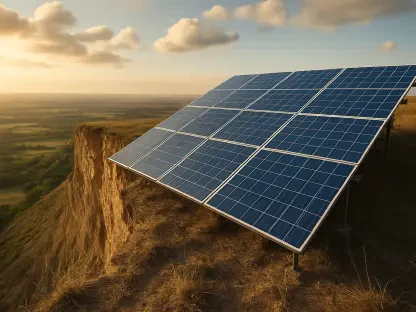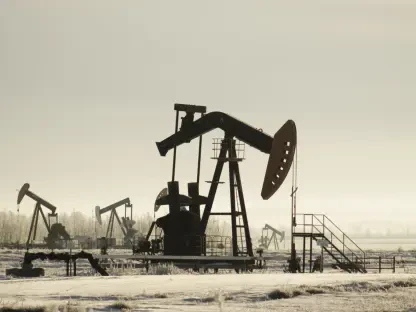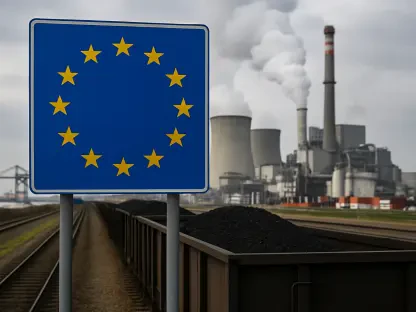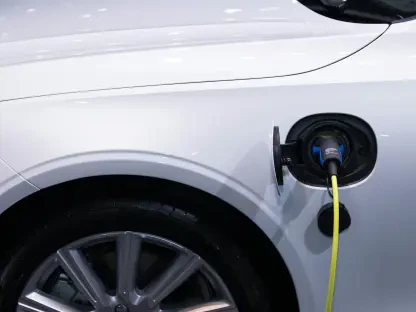In a pivotal ruling that could reshape the landscape of energy efficiency in American homes and businesses, a federal appellate court has upheld the U.S. Department of Energy (DOE) regulations banning the sale of non-condensing gas commercial water heaters and consumer furnaces. Finalized in recent years, these rules mandate a stringent 95% efficiency standard, effectively pushing the market toward condensing models that promise significant energy savings. While the DOE touts potential consumer benefits amounting to billions over decades, the decision has ignited a firestorm of controversy, with gas industry groups decrying the loss of consumer choice and the burden of high installation costs. This landmark case underscores a deeper tension between environmental goals and practical realities, raising critical questions about how far regulations should go in dictating appliance technology. As the dust settles on this legal battle, the implications for homeowners, businesses, and the broader energy sector demand closer examination.
Driving Energy Efficiency: The DOE’s Bold Mandate
The DOE’s regulations are grounded in a long-standing commitment to reducing energy waste, a mission enshrined in the Energy Policy and Conservation Act (EPCA) dating back to the 1970s. By enforcing a 95% efficiency standard, the agency aims to phase out non-condensing gas heaters and furnaces, which operate at roughly 80% efficiency, in favor of condensing units that achieve up to 95% efficiency by recapturing heat that would otherwise be lost. The projected impact is staggering, with estimates suggesting consumer savings of nearly $25 billion in energy costs over a 30-year span. Beyond financial benefits, this shift aligns with broader national goals to curb energy consumption and mitigate environmental impact, positioning the policy as a cornerstone of sustainable progress. However, the transition is far from seamless, as the technological differences between these appliance types introduce complexities that extend beyond mere efficiency metrics into the realm of infrastructure and cost.
Delving deeper into the DOE’s rationale, the focus on condensing technology reveals a calculated trade-off between upfront challenges and long-term gains. Unlike traditional non-condensing units that rely on vertical chimneys to expel heat, condensing models require horizontal venting systems and drainage mechanisms to handle residual water from recaptured heat. This often means significant modifications to existing buildings, a hurdle the DOE acknowledges but deems necessary for the greater good. The agency argues that the energy savings will eventually offset these initial expenses, particularly for consumers facing rising utility bills. Yet, while the policy’s intent is clear, its execution raises questions about accessibility and fairness, especially for those unable to absorb the immediate financial hit of retrofitting homes or commercial spaces. This gap between vision and practicality forms the crux of the opposition’s case, highlighting a divide in how benefits are perceived and prioritized.
Gas Industry Resistance: A Battle Over Choice and Cost
Opposition from gas industry stakeholders, including prominent groups like the American Gas Association (AGA) and the National Propane Gas Association, has been both vocal and resolute. Their central argument hinges on the claim that the DOE’s ban infringes on the EPCA by eliminating non-condensing appliances, which utilize a simpler, unpowered venting system seen as a distinct and valuable feature. Beyond legal objections, the industry emphasizes the economic strain on consumers, pointing to the stark cost difference in installations—replacing a non-condensing furnace can be hundreds of dollars cheaper than installing a condensing one due to the latter’s complex venting requirements. This financial burden, they argue, disproportionately affects smaller businesses and lower-income households, undermining the DOE’s narrative of universal consumer benefit and framing the rules as an overreach of regulatory authority.
Further fueling the industry’s pushback is the perceived erosion of consumer autonomy in choosing energy solutions that best fit their needs. Leaders within the sector have criticized the DOE for what they see as a dismissive approach to real-world challenges, such as the need for costly building renovations to accommodate new technology. Statements from industry representatives underscore a commitment to preserving a range of appliance options, arguing that not all consumers can or should be forced into a one-size-fits-all model of efficiency. This stance resonates with a broader concern about government mandates overriding market dynamics, a theme that has historically sparked friction in regulatory debates. As the gas industry rallies against the ban, their position highlights a critical fault line in the policy—whether the pursuit of efficiency justifies the immediate sacrifices demanded of end users, setting the stage for a contentious legal showdown.
Legal Showdown: A Divided Court Decision
The federal appellate court’s decision to uphold the DOE’s regulations by a narrow 2-1 margin has intensified the debate surrounding energy efficiency standards. The majority opinion rejected the gas industry’s contention that venting methods constitute a protected performance characteristic under the EPCA, reasoning that both condensing and non-condensing units ultimately vent heat, albeit through different mechanisms. They further posited that consumer purchasing decisions are unlikely to be swayed by the type of venting system, thereby supporting the DOE’s authority to enforce higher efficiency benchmarks. This ruling represents a significant endorsement of the agency’s regulatory framework, reinforcing the legal foundation for policies aimed at reducing energy waste. However, the split decision reveals underlying complexities, as not all judicial perspectives aligned with the majority’s interpretation of the law and its implications for appliance markets.
In a pointed dissent, Judge Neomi Rao offered a contrasting view that has given industry critics a foothold for continued resistance. She argued that the traditional vertical venting of non-condensing units is indeed a practical feature deserving protection under the EPCA, and criticized the DOE for insufficiently addressing the economic disparity between installation costs—$801 for non-condensing units compared to $1,345 for condensing alternatives. This cost gap, she contended, warranted a more robust justification from the agency, casting doubt on the policy’s fairness and thoroughness. The dissent underscores a pivotal concern: while efficiency gains are desirable, the financial impact on consumers cannot be dismissed lightly. This judicial divide mirrors the broader societal split on how to balance environmental imperatives with economic realities, leaving lingering questions about the precedent this ruling sets for future regulatory battles in the energy sector.
Navigating the Future: Policy Impacts and Industry Options
Looking at the wider implications, this court ruling encapsulates a persistent struggle between advancing green initiatives and addressing the immediate economic challenges they pose. Advocacy groups championing energy efficiency, such as the Appliance Standards Awareness Project, view the decision as a major victory, emphasizing the long-term savings and environmental benefits that condensing technology brings. Their perspective aligns with national trends toward sustainability, reflecting a growing consensus on the need to modernize energy consumption patterns. Yet, the gas industry’s warnings about diminished consumer choice and the high costs of retrofitting buildings resonate with a significant segment of stakeholders, revealing a policy landscape fraught with competing priorities. As the legal outcome solidifies the DOE’s stance, the tension between these opposing views continues to shape the discourse on how best to transition to a more energy-efficient future.
For the gas industry, the path forward remains uncertain, with limited avenues for challenging the court’s decision. Options such as requesting a rehearing before a full panel of judges or seeking review by the U.S. Supreme Court exist, but both carry significant hurdles—rehearings demand fresh arguments, and Supreme Court petitions are rarely granted without issues of national importance or conflicting lower court rulings. This legal uncertainty compounds the industry’s frustration, as the upheld ban reshapes market dynamics and consumer expectations. Meanwhile, the broader energy sector watches closely, aware that the resolution of this dispute could influence future standards for other appliances. As policymakers and stakeholders grapple with these challenges, the focus must shift toward finding equitable solutions—perhaps through subsidies or phased implementation—that mitigate the upfront burdens while advancing the shared goal of sustainability.









